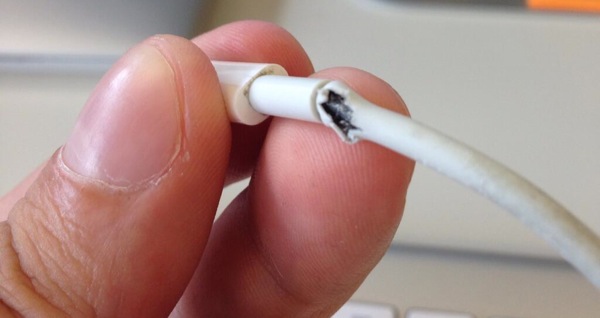
When the Lightning cable was introduced, Apple promised improved durability, and I hoped that the cable won’t get damaged like its 30-pin predecessor. The cables, however, weren’t able to deliver on its promise, as many owners complain about frayed Lightning cables.
Here are some tips to avoid damage to your Lightning cables, and what to do if your cable is already damaged:
Put Springs at the ends
Most of the damage to the cable is done because of twisting it the wrong way, applying too much pressure or pulling it from the cable rather than the connector at the end. A solution to some of these problems is to to put springs at both ends of the cable, ensuring that the cable isn’t in a bended state for a long time.
You can get a spring from any ball point pen, and then twirl it around the end, and extend the life of your cable. Here’s a short how-to video demoing the process:
Already frayed?
Many people put tapes around the area where the cable is damaged, but there’s a better solution. We’ve heard several reports that Apple Stores will give you a replacement if you bring a frayed cable along with an iPhone or iPad without asking too many questions. So you may want to go to an Apple Store or Apple authorised service centre with the frayed Lightning cable and your iOS device to get a replacement.
If you don’t have an Apple Store around you, you can buy a new Lightning cable, but instead of buying it from Apple for $19, you can buy an MFi-certified cable from Amazon for as cheap as $10.
[via Simon Tay, Image Credit]